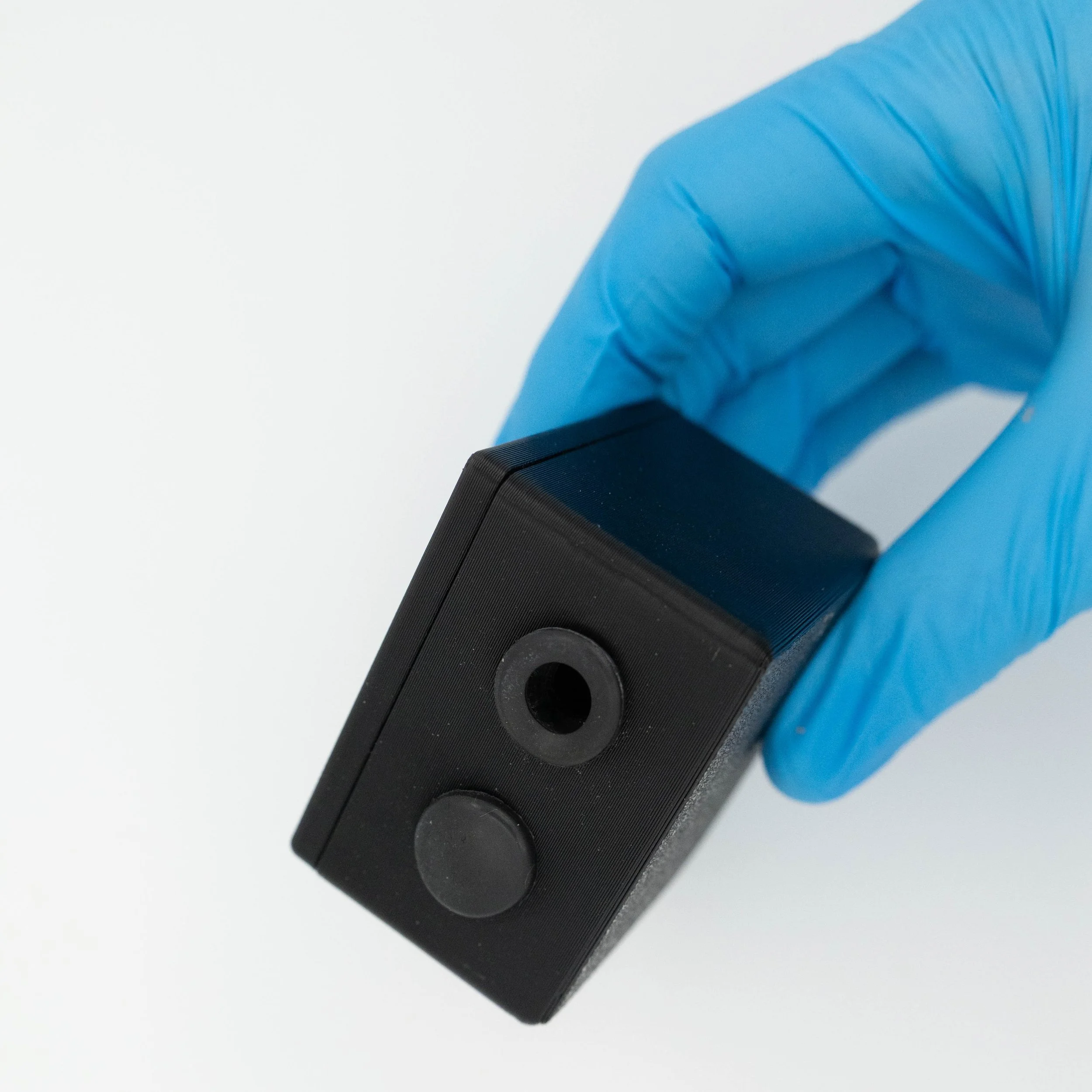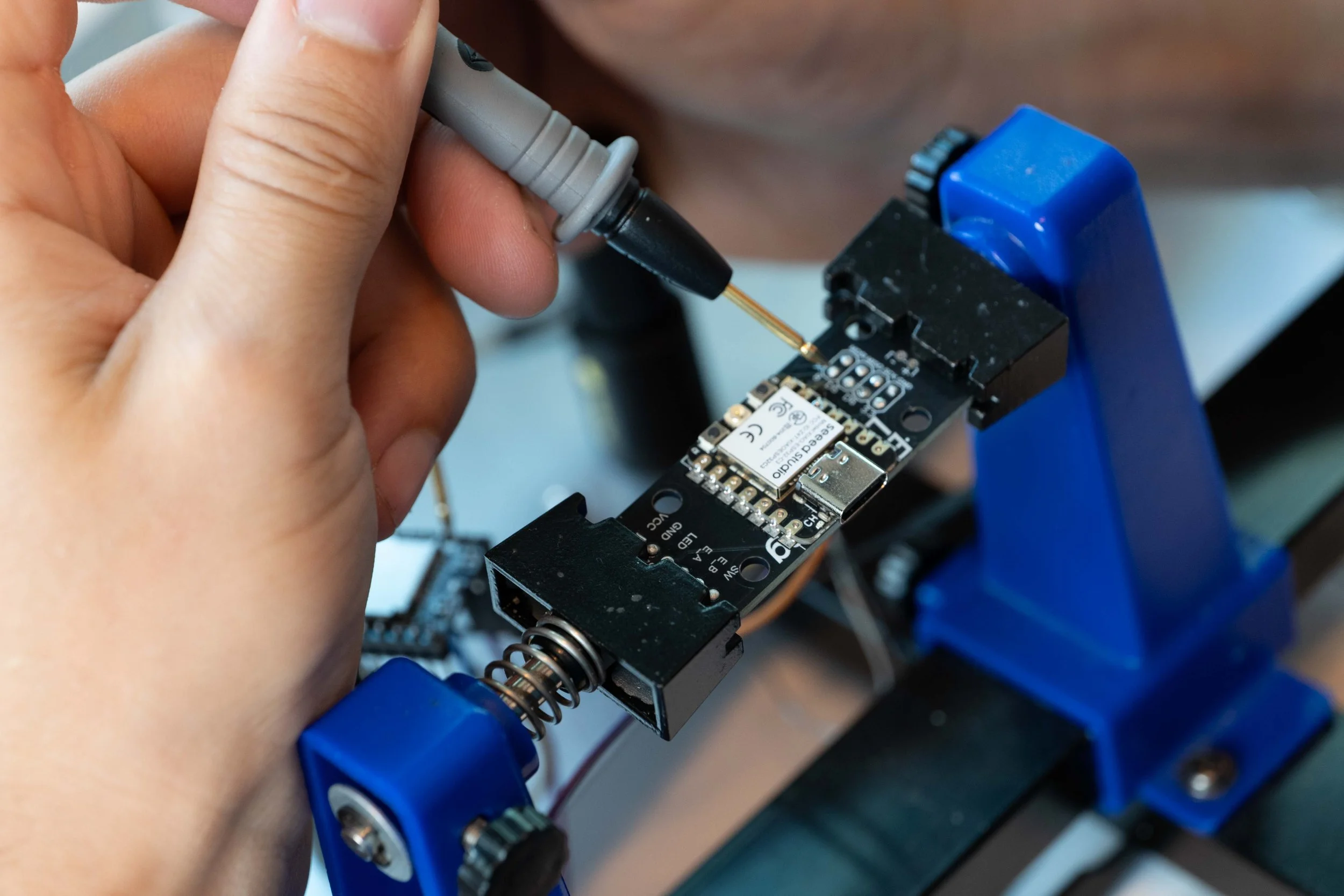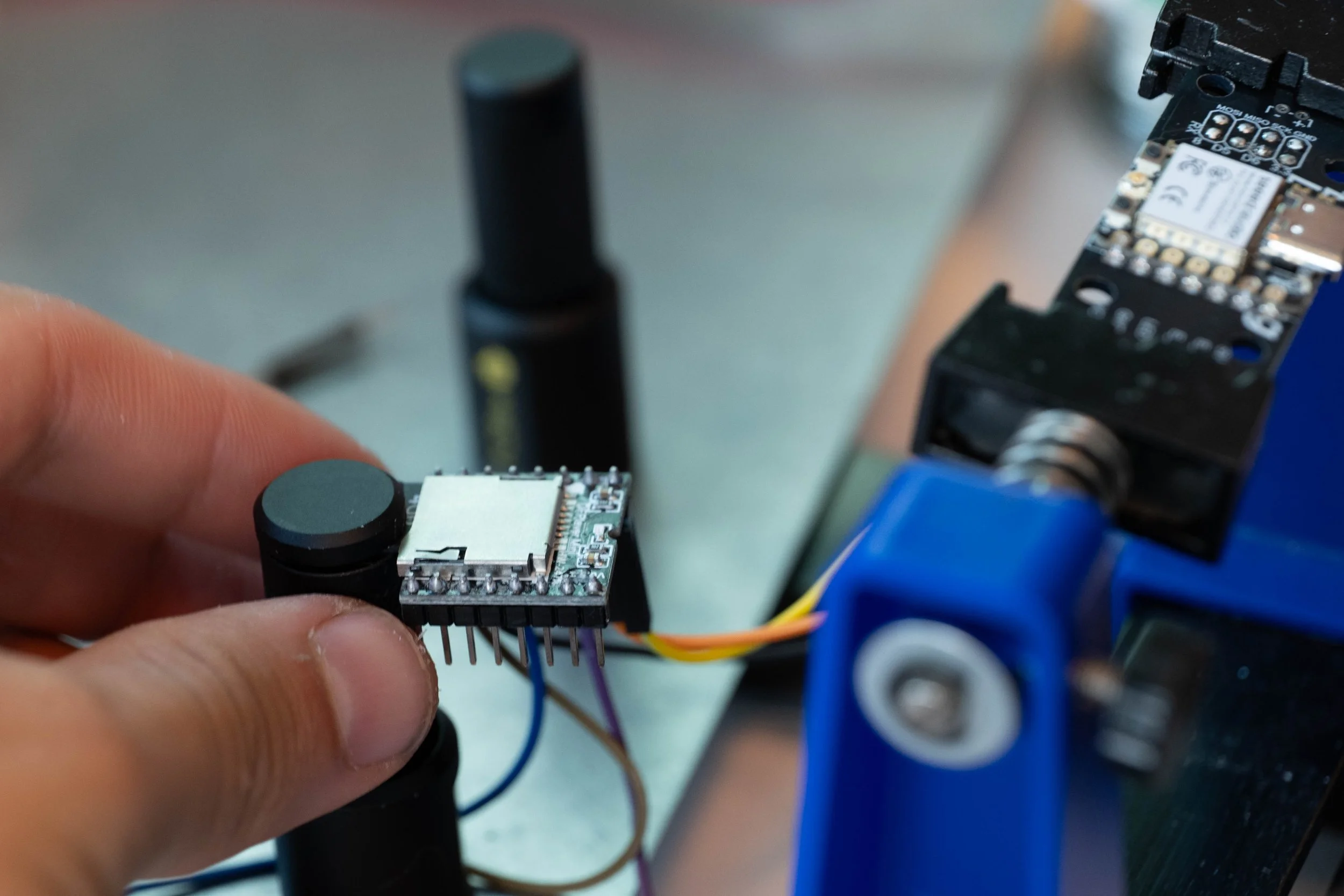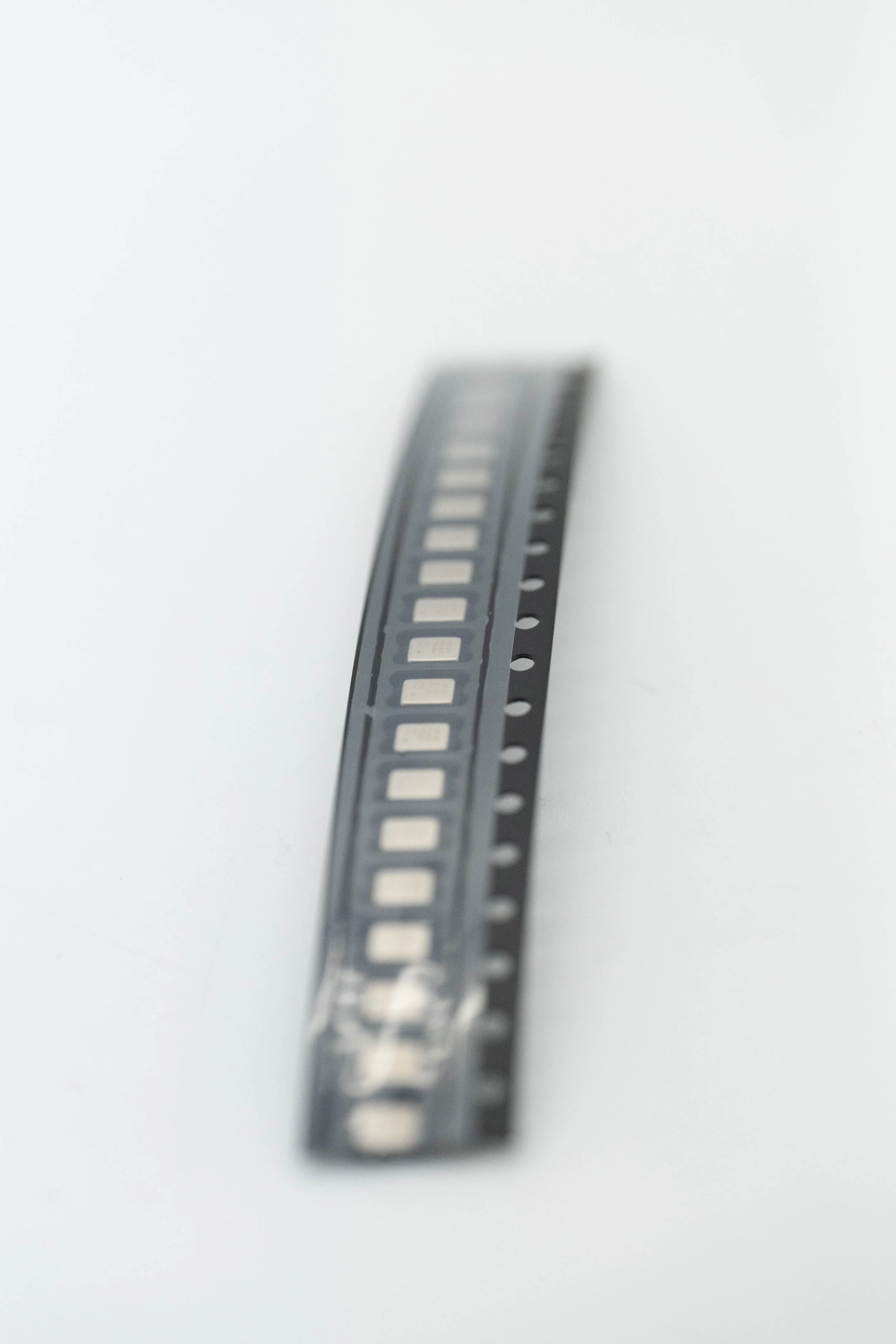Inside the Stack: How AI Hardware Devices Are Built and Launched
At Engineering Lab, we design and build intelligent products from concept to production. With the rapid rise of generative AI and voice-driven systems, we’re now helping startups and innovators bring AI-powered devices into the real world. This is hardware that doesn’t just sense, but listens, understands, and responds.
If you're considering launching a voice-enabled or LLM-integrated device, here's a look at what it takes, and how we can help you do it faster and smarter.
AI technologies aren’t the black box they once were. Today, we can reach into that mystery, harness powerful machine learning models, and build them directly into our own products, turning complexity into something we can hold, shape, and use.
A pile of resistors, capacitors, and connectors in their bags is nothing special on its own. But when brought together with intention and intelligence, they become part of something far greater. Like AI, the value isn't in the parts, it's in how they work together.
The Core Architecture of an AI Device
Building an AI hardware product goes beyond soldering a microphone onto a PCB. There’s a whole pipeline that must run smoothly, securely, and efficiently:
Audio Input
High-quality microphones (often MEMS) pick up sound. Proper analog front ends and ADCs ensure clean signal capture.On-Device Processing
Microcontrollers or Microprocessors handle:Noise reduction & beamforming
Voice activity detection
Local wake-word processing
Audio to Text
The captured audio is either:Sent to the cloud for speech-to-text (e.g., Whisper, Google, Chirp), or
Converted locally, if real-time response or privacy is critical.
Compression & Transfer
Efficient encoding (e.g. FLAC or Opus) and message size optimisation are key—especially over Wi-Fi or LTE.Querying the LLM
Once the text is prepared, it's sent to a cloud-based language model (like OpenAI or open-source equivalents).
Expect:50–300 tokens per request (depending on user input and prompt size)
Cost estimates: around €0.001–€0.01 per call, depending on LLM provider and prompt structure
Response & Action
The response text is either:Played back as speech (TTS) on the device
Used to trigger an action
Displayed in an app interface
A technician uses a multimeter to check continuity on a newly soldered circuit board — verifying signal integrity and connection reliability.
Connecting multiple circuit boards with wiring in preparation for testing — a critical step in enabling reliable signal and power flow for LLM integration in hardware systems.
Device Design: Our Approach
We specialise in making AI devices not just smart, but beautifully integrated. That includes:
Custom PCBs with low-power audio front ends, Wi-Fi/BLE modules, and secure boot firmware
Form factor design that considers speaker layout, mic isolation, and thermal management
Enclosure design that is ergonomic, visually appealing, and fit for purpose, with prototyping options such as CNC machining, SLS printing, and cast urethane for high-quality pre-production runs
Seamless integration of audio, touch, gesture, or even camera input if needed
Human Interface Matters
AI should feel natural, we make sure the key bases are covered and then dial in the design, tweaking and improving until we have a device which operates perfectly and is a pleasure to interact with.
We prototype and validate:
Voice interaction flows (what happens when it mishears?)
Minimalist buttons or capacitive sensors
LED or haptic feedback for silent cues
Mobile app connectivity for setup, logging, or fallback input
Our goal: make it feel like an assistant, not a device.
Battery Life & Connectivity
We help balance power budgets by selecting the right mix of:
Low-power MCUs (e.g., ESP32, nRF52, RP2040)
Efficient wake-on-sound architectures
Sleep states and conditional cloud calls to save energy and cost
Typical runtime for always-on voice devices:
4–20 hours on lithium-poly cells, depending on usage pattern
Recharge via USB-C, Qi wireless, or dock
A reel of MEMS microphones, packaged and ready for automated placement. These components are relatively large compared to the ultra-compact parts we typically mount on our densely packed boards.
A microplacer accurately selects and positions miniature components onto a solder-pasted circuit board. Once placed, the board moves through a reflow oven, where heat secures the components in place for reliable electrical and mechanical connections.
App & Cloud Stack
We support or integrate:
Mobile apps (Flutter or native) for onboarding and history
Backend services to route ASR/LLM traffic (Node.js, Python, Firebase, etc.)
Secure OTA updates and real-time metrics tracking
Let’s Build Your AI Product
Whether you're prototyping a voice assistant, wearable, embedded AI tool, or something entirely new - Engineering Lab can help you:
Validate your AI hardware concept
We help you choose the right architecture, components, and integrations—from LLM APIs to microphone arrays.Prototype fast, iterate smarter
Get working prototypes in-hand quickly, with fully integrated hardware and firmware tailored to your use case.Test cost, performance, and scalability
We run feasibility checks early so you avoid surprises later—real-world power use, API call costs, latency, and more.Deliver polished, pitch-ready prototypes
Functional, refined, and presentation-ready units for user testing, investor demos, or early customer trials.Transition to production with confidence
We prepare your design for manufacturing—finalised electronics, tested enclosures, and clean handoff to scale.
AI in hardware is no longer science fiction—it’s a product category. Let’s build it right.
Ready to build your AI hardware product?
Let us help you turn your idea into something real. Whether you're at concept stage or ready to prototype, we can support you every step of the way - and, as is typical for this kind of work, we operate under NDA to protect your intellectual property throughout the process.
We’ve done this before — now let’s do it for you.
Click below to start the conversation





